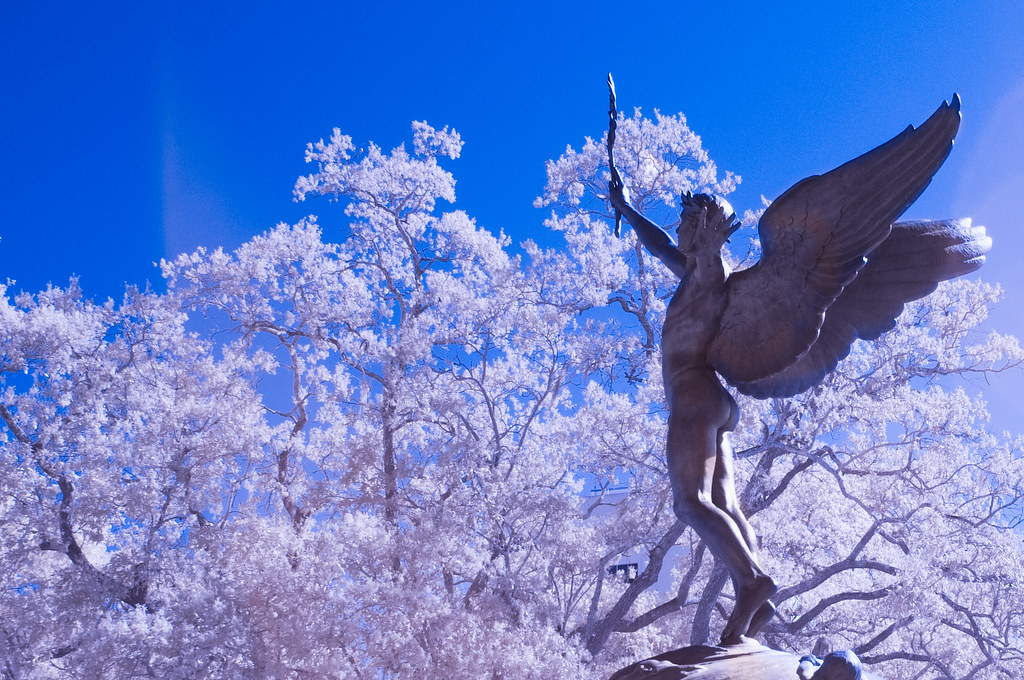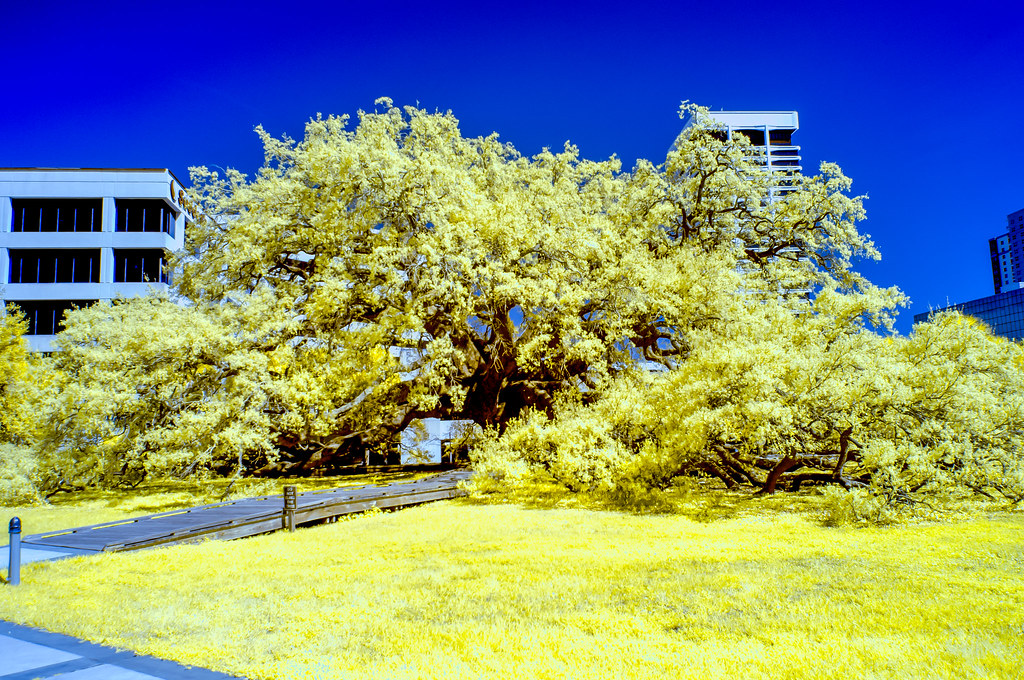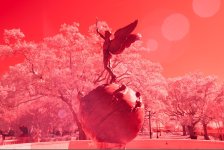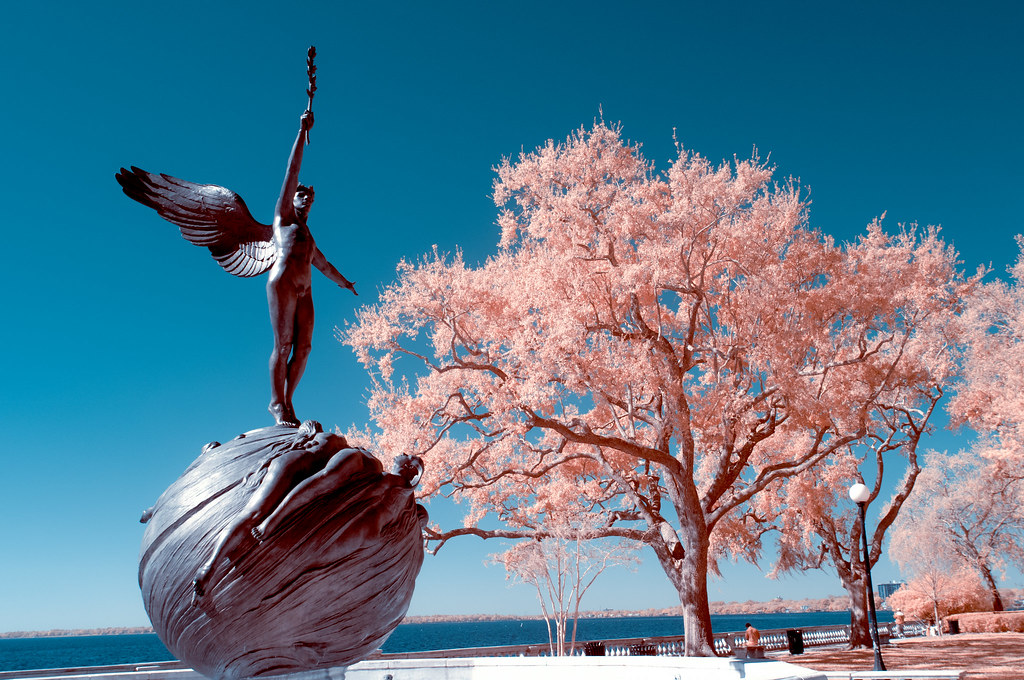I sent my D300 off yesterday to Kolari Vision for a 590 IR conversion. I'll post up more info as I go through the process. After doing some research, I decided to go with them instead of LifePixel due to cost and another member (Backdoorhippie) here having used them. Their check out system could be a little more refined but overall good experience thus far.
You are using an out of date browser. It may not display this or other websites correctly.
You should upgrade or use an alternative browser.
You should upgrade or use an alternative browser.
d300 IR conversion
- Thread starter PapaST
- Start date
Fred Kingston
Senior Member
I'm watching this thread with anticipation... I have a D200 I want to convert...
MartinCornwall
Senior Member
Looking forward to the pics but not sure about the 590 IR. When my D7000 was alive 720nm wasn't enough and 850nm was a bit too much. This is only with filters but from my research into this if I convert a camera it will be 800nm. 590nm is outside of the IR Spectrum. Looking forward to the pics though 
So I sent my Nikon D300 off to Kolari Vision in late February for a 590nm IR conversion. For me it boiled down to Kolari or LifePixel. I decided to save some money and go with Kolari (total with shipping/insurance $293). LifePixel's base price was $325 and I'm not sure how much more it would have been after check-out. It ended up being about 16 days from the time I shipped it out to the time I got it back.
My impressions are somewhat mixed. Kolari seemed a bit unrefined. Their check-out system was a little awkward. Mailing in your camera there isn't an acknowledgement that they got it and will start work. They are however quick to reply to emails so that was a good sign and they are very courteous. When I received the camera the mirror was a bit dirty. The sensor seemed to be fine after a couple of blows. I checked and cleaned both before sending it off. Probably the most disappointing part was the reassembly. A couple of the screws were not screwed in properly which caused some of the plastic internally to jut into the camera battery compartment. Because of this it was impossible to insert a battery. So I messed around with it, peeling back the rubber grips and trying to back the screws out and then somehow screw them in properly. But each attempt never worked and ended up pushing the plastic out. So I watched some videos and I ended up taking some screws from another location and using those because they were shorter and therefore didn't push the plastic out into the compartment.
Since then it's just been a learning curve getting to understand the nuances of shooting IR. The PP is involved and the more you get used to it the better you get at pulling out dramatic results. Overall I'm very pleased with the end results of my camera. If I did another conversion would I go with Kolari? Possibly. It really depends on how much money you save. If it's just $50 or less then I might try another vendor.
 BM3_2830-Edit by BMalinis, on Flickr
BM3_2830-Edit by BMalinis, on Flickr
 BM3_2835-1 by BMalinis, on Flickr
BM3_2835-1 by BMalinis, on Flickr
 BM3_2817-Edit by BMalinis, on Flickr
BM3_2817-Edit by BMalinis, on Flickr
 BM3_2847-Edit by BMalinis, on Flickr
BM3_2847-Edit by BMalinis, on Flickr
My impressions are somewhat mixed. Kolari seemed a bit unrefined. Their check-out system was a little awkward. Mailing in your camera there isn't an acknowledgement that they got it and will start work. They are however quick to reply to emails so that was a good sign and they are very courteous. When I received the camera the mirror was a bit dirty. The sensor seemed to be fine after a couple of blows. I checked and cleaned both before sending it off. Probably the most disappointing part was the reassembly. A couple of the screws were not screwed in properly which caused some of the plastic internally to jut into the camera battery compartment. Because of this it was impossible to insert a battery. So I messed around with it, peeling back the rubber grips and trying to back the screws out and then somehow screw them in properly. But each attempt never worked and ended up pushing the plastic out. So I watched some videos and I ended up taking some screws from another location and using those because they were shorter and therefore didn't push the plastic out into the compartment.
Since then it's just been a learning curve getting to understand the nuances of shooting IR. The PP is involved and the more you get used to it the better you get at pulling out dramatic results. Overall I'm very pleased with the end results of my camera. If I did another conversion would I go with Kolari? Possibly. It really depends on how much money you save. If it's just $50 or less then I might try another vendor.
 BM3_2830-Edit by BMalinis, on Flickr
BM3_2830-Edit by BMalinis, on Flickr BM3_2835-1 by BMalinis, on Flickr
BM3_2835-1 by BMalinis, on Flickr BM3_2817-Edit by BMalinis, on Flickr
BM3_2817-Edit by BMalinis, on Flickr BM3_2847-Edit by BMalinis, on Flickr
BM3_2847-Edit by BMalinis, on FlickrJust a note about the conversion. There is a bit of focusing calibration that happens after the conversion (among other things of course). My concern was whether a factory reset on my camera would mess up any of the calibration done on my camera after the conversion. I reached out to Kolari and they were quick to respond. They said all the changes were mechanical (focusing) so a factory reset would not harm anything.
No worries Bill. The conversion allows your camera to take pics of the Infrared spectrum. You can also achieve this with filters opposed to getting your camera converted for IR, like I did. The filters range in price from $15 to more than $100. I believe when you use an IR filter that you have to achieve focus prior to using the filter. You might even have to play with the exposure settings (not really sure). My camera conversion cost me about $280 through KolariVision.
Also, there are different types of filters. Mine is a 590nm which allows more visible light to help me achieve more colors. If you read KolarVision or LifePixel, they cover all the different filters in depth and with much more information than I can provide.
My photos are taken during the daytime and require a bit of post processing. BackDoorHippie has some excellent videos on some of the necessary steps in PP to get what you're looking for. It's a pretty fun little field to get into. And not a bad idea if you have an older camera laying around.
I have to admit the PP has been a challenge. I think I did a pretty good job with the photos I processed above but for the life of me I haven't been able to reproduce the same results with other photos. I'm basically going back over my whole process to see what I'm missing. To give you an idea, straight out of the camera images look like this and are worked in PP to achieve my first photo in post #5

Also, there are different types of filters. Mine is a 590nm which allows more visible light to help me achieve more colors. If you read KolarVision or LifePixel, they cover all the different filters in depth and with much more information than I can provide.
My photos are taken during the daytime and require a bit of post processing. BackDoorHippie has some excellent videos on some of the necessary steps in PP to get what you're looking for. It's a pretty fun little field to get into. And not a bad idea if you have an older camera laying around.
I have to admit the PP has been a challenge. I think I did a pretty good job with the photos I processed above but for the life of me I haven't been able to reproduce the same results with other photos. I'm basically going back over my whole process to see what I'm missing. To give you an idea, straight out of the camera images look like this and are worked in PP to achieve my first photo in post #5

Great stuff. I had my D80 converted with life pixel. I kind a regretted it since I hate spending a lot of time in post processing. So it just collects dust in my camera bag.
I hope you get to enjoy your somewhat "new" toy.
No kidding Glenn. PP is a challenge. I don't mind working the image but sometimes the image is a puzzle and you really need to know your stuff in order to bring the right colors out of the image. I mentioned in my previous post, that the 4 or 5 pics I posted I'm pretty proud of. Since then I've taken some pics and I cannot for the life of me reproduce them in the same way. It's like I'm missing a step or not doing something right.
Either way, you're right, the PP part is challenging. I think I'll get better overtime if I practice.
Can you shoot at night, and have it turn out?
No worries Bill. The conversion allows your camera to take pics of the Infrared spectrum. You can also achieve this with filters opposed to getting your camera converted for IR, like I did. The filters range in price from $15 to more than $100. I believe when you use an IR filter that you have to achieve focus prior to using the filter. You might even have to play with the exposure settings (not really sure). My camera conversion cost me about $280 through KolariVision.
Also, there are different types of filters. Mine is a 590nm which allows more visible light to help me achieve more colors. If you read KolarVision or LifePixel, they cover all the different filters in depth and with much more information than I can provide.
My photos are taken during the daytime and require a bit of post processing. BackDoorHippie has some excellent videos on some of the necessary steps in PP to get what you're looking for. It's a pretty fun little field to get into. And not a bad idea if you have an older camera laying around.
I have to admit the PP has been a challenge. I think I did a pretty good job with the photos I processed above but for the life of me I haven't been able to reproduce the same results with other photos. I'm basically going back over my whole process to see what I'm missing. To give you an idea, straight out of the camera images look like this and are worked in PP to achieve my first photo in post #5
View attachment 146823
Can you shoot at night, and have it turn out?
That's a great question. I suppose you could. Obviously you'd need a tripod and I'm not sure how much IR radiates at night. But I guess you've given me something to try.
Englischdude
Senior Member
No worries Bill. The conversion allows your camera to take pics of the Infrared spectrum. You can also achieve this with filters opposed to getting your camera converted for IR, like I did. The filters range in price from $15 to more than $100. I believe when you use an IR filter that you have to achieve focus prior to using the filter. You might even have to play with the exposure settings (not really sure). My camera conversion cost me about $280 through KolariVision.
Also, there are different types of filters. Mine is a 590nm which allows more visible light to help me achieve more colors. If you read KolarVision or LifePixel, they cover all the different filters in depth and with much more information than I can provide.
My photos are taken during the daytime and require a bit of post processing. BackDoorHippie has some excellent videos on some of the necessary steps in PP to get what you're looking for. It's a pretty fun little field to get into. And not a bad idea if you have an older camera laying around.
I have to admit the PP has been a challenge. I think I did a pretty good job with the photos I processed above but for the life of me I haven't been able to reproduce the same results with other photos. I'm basically going back over my whole process to see what I'm missing. To give you an idea, straight out of the camera images look like this and are worked in PP to achieve my first photo in post #5
View attachment 146823
great to have another ir shooter here... someone else at last to contribute to jake's infrared thread. Not sure what lens you are using here but I suggest you find a lens that offers minimal flare/hotspots. This shot demonstrates this problem very clearly. kolari offers a list on their site but some of the lenses they list as working well with IR, I have found to have alot of flare or large hotspots. My current goto IR lenses are the cheapo 28-80 from nikon and the 14mm samyang/rokinon.
Astrophotography is commonly done with full spectrum conversions, meaning it is converted to accept not only IR but also UV light.
Looking forward to seeing more of your shots.
Englischdude
Senior Member
Great stuff. I had my D80 converted with life pixel. I kind a regretted it since I hate spending a lot of time in post processing. So it just collects dust in my camera bag.
I hope you get to enjoy your somewhat "new" toy.
hi glenn,
but once you have done the processing you can save the styles for future use. I find that using my IR processing styles/presets only slightly more time consuming that my normal visible spectrum pics.
Good morning, great thread. I found this thread while searching for anyone who has had a D300s converted by Lifepixel. I have two bodies that were converted by Lifepixel. A D40x at 720nm and a D200 with the 590nm filter. Both cameras came back from the conversion looking like they'd never been worked on, all screws and parts fitting like factory. They are a little more expensive, but the quality is top notch. Post is really simple after you find what you like, I find that I spend less time on most of my IR shots than my portraits. Read through the How To's on LP, there are some good tips there

